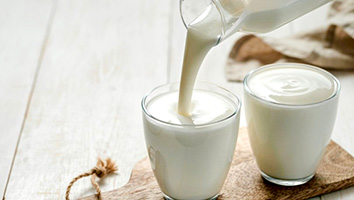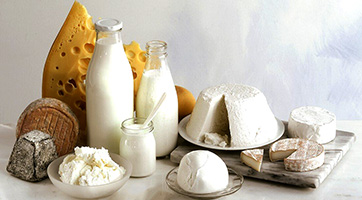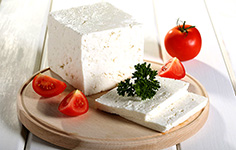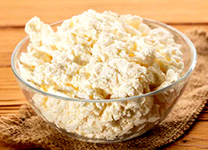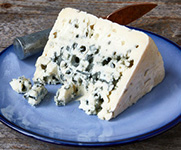Yogurt, Kefir and Cheese, Friend or Foe?
Yogurt is a food obtained as a result of fermentation of milk by some very special bacteria and yeasts. The main ones that ferment milk are:
- Lactobacillus Bulgaricus,
- Streptococcus Thermophilus,
- Bifidobacterium.
With the fermentation of milk, very important changes occur in milk and a completely different food product emerges. However, the yogurt in question here is not the yogurt sold in the markets and not spoiled after months of waiting, but the yogurt bought from dairy farms or made with natural yeast at home.
The first change is related to lactose intolerance. Bacteria that turn milk into yogurt with the fermentation of milk naturally convert lactose sugar, which causes this disorder, into glucose and galactose, so some diseases that occur when milk is consumed do not appear in yogurt.
The second important change is that some hormones in milk that can be harmful are largely deactivated by bacteria during the fermentation of milk and are no longer harmful.
Yogurt, the product that emerges after the fermentation of milk, turns into a very important food item that is easy to digest, rich in quality protein and calcium. But perhaps the most important feature of yogurt is that the bacteria that help ferment the milk, namely Probiotic Bacteria, settle in the intestines after a while and become a part of the microbiome called healthy intestinal flora (please refer to
Gut Health section).
Detailed reading:
Everything you need to know about yogurt,
6 Impressive Health Benefits of Yogurt,
Amazing Health Benefits of Yogurt with Probiotics,
Yogurt - Uses, Side Effects, and More
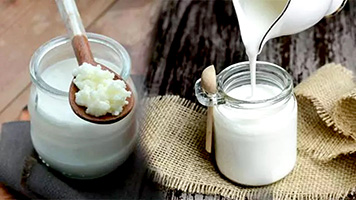
Kefir Yeast + Milk = Kefir
Kefir, which is the result of fermentation of milk like yogurt, is also a very important food, but it is a little different from yogurt. The difference of kefir yeast from yoghurt yeast is due to the combination of a number of bacteria and yeasts living in harmony in a polysaccharide and protein mass.
Kefir contains 12 times more Probiotic Bacteria and Yeast than yogurt. These are:
- Lactobacillus Acidophilus,
- Lactobacillus Brevis,
- Lactobacillus Kefir,
- Streptococcus Thermophilus,
- Lactococcus Lactis,
- Pseudomonas Putida,
- Candida Humilis,
- Kazachstania Unispora,
- Kluyveromyces Lactis,
- Saccharomyces Unisporus.
Although the nutritive properties of kefir are almost the same as yogurt, it has much more healthy properties. In summary, yogurt and kefir, unlike milk, are extremely beneficial and healthy. So they are friends. It is beneficial for everyone, young, old, sick or healthy, to eat 200-250 grams of natural yogurt a day.
Detailed reading:
9 Evidence-Based Health Benefits of Kefir,
Kefir: Is It Good for You?
When it comes to cheese, cheeses like yogurt, are products that are fermented by different bacteria. As in yogurt, the harmful effects of lactose and some hormones, which can cause problems in milk, are eliminated during this fermentation process. As a result, tens, hundreds, even thousands of different types of extremely delicious cheese are produced.
There are different types of cheese in different cultures of the world, especially in Europe, the cheeses of France and Italy are famous. Americans put cheese on everything. So what is the source of this passion for cheese all over the world?
The interesting thing here is that cheese is an addictive food. Milk proteins, which become highly concentrated during the making of cheese, the first of which is "Casein", produces a substance called "Casomorphin" when digested. As the name suggests, this substance is a very interesting molecule with Morphine-like effects. When Casomorphine mixes with the blood and reaches the brain, it causes the release of Dopamine, one of the happiness hormones, from the brain.
There is an evolutionary explanation for this phenomenon, it is thought that the baby who is breastfed finds peace and happiness thanks to these substances and is more strongly attached to his mother. This addiction and weakness starting from infancy can cause serious problems in the future. As we can see in life, there is hardly anyone who does not like cheese, but for some people this love turns into a passion.
So, is cheese friend or foe? Cheese is a friend in terms of its great taste and the happiness it gives but sometimes friends can harm people. Milk contains very high levels of lactose, protein, saturated fats and cholesterol so that the mother can feed her baby. The problem occurs when milk turns into cheese!
One kilo of cheese is made from about 10 to 15 kilos of milk. When most of the water is set aside during manufacturing, the lactose, protein, saturated fats and cholesterol in 10-15 kilos of milk become concentrated into a single kilo. Therefore, when we look at cheese, we see that it contains a very high amount of protein, saturated fats and
cholesterol.
Eating 50-100 grams of cheese a day in a healthy and balanced diet is generally not a problem, but eating 100 grams or more of cheese can upset the order in people with borderline values, diabetes or
insulin resistance, or cholesterol imbalance. In the meantime, we should not forget the important role of
eggs and cheese in the formation of diabetes.
Detailed reading:
Cheese: Are There Health Benefits?,
Cheese Consumption and Risk of All-Cause Mortality: A Meta-Analysis of Prospective Studies
Cheese is a well-known source of calcium and is one of the richest nutritional sources for it. Calcium is essential to bone health and has been found to help against diseases like osteoporosis. It’s also been found to help heart health as it can help to reduce the risk of
hypertension, which is a leading cause of heart disease.
Cheese is also rich in the following:
Vitamin B12,
Zinc,
Riboflavin (which contain B2 vitamins),
Vitamin A,
Vitamin K2,
Probiotics.
The fat contents of cheese can be variable depending on the type of cheese. Cheese fat is highly complex and contains hundreds of different fatty acids. It’s high in saturated fat but also provides a fair amount of monounsaturated fats. Some types of cheese with their calories and fat contents are listed below:
- Feta Cheese: Feta cheese is made from ewe and goats milk and is the ideal cheese for lactose-sensitive eaters. If you are looking for a healthier cheese, feta might be the one for your diet!
1 oz. / 28 gram of Feta cheese contains:
84 calories,
7.1 gram of fat.
- Mozzarella (Half fat): Half fat mozzarella contains fewer calories as well as being lower in fat.
1 oz. / 28 gram of Mozzarella cheese contains:
55 calories,
3.2 gram of fat.
- Italian Ricotta: Italian Ricotta cheese is made from whey and is naturally low in fat. It tastes great with bagels, crackers and fresh fruit.
1 oz. / 28 gram of Italian Ricotta cheese contains:
53 calories,
4.2 gram of fat.
- Cottage Cheese: Cottage cheese is low in fat and is loaded with casein proteins making it a healthy cheese option. Besides, research shows that snacking on cottage cheese before bed can speed up
metabolism.
1 oz. / 28 gram of Cottage cheese contains:
20 calories,
0.3 gram of fat.
- Halloumi Cheese: Halloumi cheese is high in fat making it quite calorific. High amounts of Halloumi cheese could quickly cause a calorie build up.
1 oz. / 28 gram of halloumi cheese contains:
86 calories,
6.6 gram of fat.
- Goats / Blue Cheese: 1 oz. of semi-soft goat’s cheese contains 6 grams of saturated fat, which is nearly 30% of the daily recommended value.
1 oz. / 28 gram of goats cheese contains:
95 calories,
8.0 gram of fat.
- Roquefort Cheese: Roquefort is a processed blue cheese and is incredibly high in
sodium. 1oz. of Roquefort cheese is 500mg of sodium which is over a third of your daily recommended allowance and is incredibly high in saturated fats! High sodium levels and saturated fats are an unhealthy combination and could easily lead to health problems in the long run.
1 oz. / 28 gram of Roquefort cheese contains:
102 calories,
8.9 gram of fat.
- Parmesan Cheese: It’s a wonderful way to give a little tangy taste to your healthy homemade pizzas and pastas. However, be careful of how much you’re melting onto your food as you may be adding a sprinkling of calories rather than flavour.
1 oz. / 28 gram of Parmesan cheese contains:
108 calories,
7.3 gram of fat.
- Cheddar Cheese: As popular as it is, it may not come as a shock to learn that Cheddar cheese is amongst one of the unhealthiest cheeses.
1 oz. / 28 gram of Cheddar cheese contains:
116 calories,
9.8 gram of fat.
Despite everything, it is useful to describe cheese as a friend with the potential to harm. It's all about staying at a reasonable amount. Less is a good decision, much can be harmful!
With your healthy diet, boost your Nitric Oxide, Antioxidants and Omega 3 levels with
Wellness Triangle which will also prevent cell deformation, protect heart and cardiovascular health, improve immune response, and prolong your life span. After only 30 days of regular use, you will easily notice the changes on your body, but better is to get a blood test at the beginning and at the end of the cure to see all the regenerations on the results. Take action today, improve your health, enhance your life quality... tomorrow may be too late!
Wellness Triangle is the best supplement, a complete support, unique in the world, that provides a healthy living with the regular use of only 3 products.
Learn More
Back to Home




